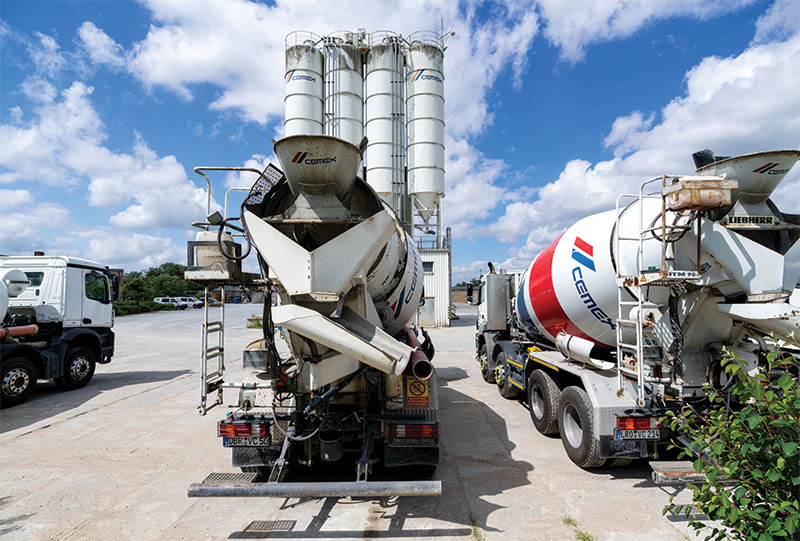By Peter Weill, Stephanie L. Woerner, and Ina Sebastian
Given the ubiquity of the expression “digital transformation”, we might assume that we all know what it is, and what needs to be done to make it happen successfully. Sadly, the evidence does not support such confidence. Here are some key recommendations for avoiding the pitfalls in the process.
KEY TAKEAWAYS
- Future-ready transformations are critical for companies to remain competitive and adapt to changing market conditions, but many such efforts fail to achieve their objectives.
- Common obstacles to successful transformations include resistance to change, lack of leadership buy-in, and insufficient resources and talent.
- To overcome these challenges and achieve successful transformations, companies need to prioritize effective communication, engage employees at all levels, and invest in talent development and technology.
After several years of trying, only 27 per cent of companies have successfully transformed to become Future Ready. Transforming a company to succeed in the digital economy requires a vision and a playbook to help leaders deliver on that vision, regularly communicating with markets, constantly motivating and enabling employees, and keeping everyone focused on a common goal as they work to create new value in an increasingly digital world. In our recently published book, Future Ready: The Four Pathways to Capturing Digital Value1, which is based on more than five years of MIT CISR research2, we identified five actions that we recommend companies take to ensure that their transformation journey to Future Ready is successful. These actions are the playbook of what a company must get right in the transformation, and they help leaders prioritise their efforts. In this article, we summarise the current state of digitally enabled business transformation and describe the five recommended actions, illustrating them with a case study of CEMEX.
The Uncomfortable Truth about Transformation
Only 27 per cent of companies have become Future Ready for the digital era by the end of October 2022 – simultaneously transforming both their customer experience and operational efficiency. Those companies have reaped the rewards for their hard work, growing at 7.9 percentage points higher than the industry average, with 7.0 percentage points higher net margins. In most other companies, however, transformation efforts have often stalled after capturing some of the low-hanging fruit. We have analysed data from 2015 to 2023 from our MIT CISR research on digitally enabled business transformation success. We asked company leaders what “per cent complete” their transformation was relative to what they promised their board. The answer changed from 33 per cent in 2017 to 50 per cent in 2019 and 55 per cent in 2022. Not bad progress but clearly slowing down. The reason is simple. It gets harder once you have captured the low-hanging fruit and requires more fundamental changes to the organisation, particularly around what we call the four organisational explosions (i.e., changing decision rights, new ways of working, platform mindset, and organizational surgery). The good news is that the companies that have made it to Future Ready – 23 per cent in 2017 and 27 per cent in 2022 – have consistently stronger revenue growth and net margin than their competitors.
In the book, we describe many companies, including Schneider Electric, Kaiser Permanente, CarMax, Standard Bank Group, DBS, PingAn, and CEMEX, that have become, or have made strong progress towards becoming, Future Ready in many different industries. In all these companies, there were two critical common elements. First, the senior management team – often including the CEO, one or two heads of the lines of business and typically the CIO and CFO – created a Future Ready vision of what the company would look like after digitally enabled business transformation and sold it to all the stakeholders, refining the vision even in the face of setbacks. And it was that vision that drove the change. Second, the senior management team led the transformation by pursuing the five actions.
Managing a Digitally Enabled Business Transformation
Once leaders have created their vision for the transformation, they must begin the journey by mapping out how they will tackle the five actions (see figure 1). Not addressing the five actions proactively typically leads to the transformation stalling.

1. Motivate with a strong purpose
For a transformation to be meaningful and resonate with stakeholders, leaders must make the company’s purpose the journey’s North Star. Its purpose guides a company’s version of Future Ready (its Future Ready vision), becomes the shared goal, and helps people make judgements about trade-offs in times of uncertainty. For example, for Standard Bank Group, the purpose was “Africa is our home and we drive her growth”, which contributes to Standard Bank’s Future Ready vision to both “bank the ecosystem” and “be the ecosystem driver” in target areas including health, trade, traders, home, and education.
2. Commit to a pathway
Many companies beginning a transformation have silos and spaghetti – sets of systems that support a subset of a company, such as a business unit, a product, or a geography. Incompatible with each other and not integrated, these silos must be connected point-to-point to enable each new solution, with the overall system ultimately resembling a plate of spaghetti. To move toward Future Ready from this state, every company must choose a pathway (or multiple, coordinated pathways) for the transformation. Aligning on a common language for the transformation and then on the chosen pathway(s) is critical in preventing executives and other employees from talking past each other and executing an uncoordinated approach with poor outcomes. The Four Pathways framework was first published in The European Business Review in 2019.3
3. Anticipate the explosions
Leaders must deal with difficult organisational changes – altering decision rights, creating new ways of working, developing a platform mindset, and performing organisational surgery – to develop new enterprise-wide capabilities for leading customer experience and operational efficiency. We call these changes organisational explosions, because that is what they feel like and they affect most of a company’s employees and partners. Leaders need to address the explosions deliberately, anticipating and managing their impacts, to create value rather than destroy it.
4. Build capabilities
Our research identified ten future-ready capabilities that top-performing companies develop to progress on customer experience and operational efficiency simultaneously and consistently and capture more digital value. Among the ten capabilities are rapid learning throughout the company and a modular, open, and agile approach to managing technology. An important and far-reaching aspiration is to extend these ten future-ready capabilities across the entire company, including the board and top management team. This is an ongoing effort that requires leadership, budget, fresh approaches and new metrics, and perseverance.

5. Accumulate value
To achieve future-ready company performance, leaders must ensure that digital transformation initiatives accumulate value from three areas: from operations, from customers, and from ecosystems – all significant predictors of company performance – ideally tracked in real-time dashboards. Dashboards should be accessible by everyone at the company, including the board and top management team, to make success visible and guide next steps.
Leading the CEMEX Journey to Future Ready
Leaders at global building materials company CEMEX focused on the five actions in its successful transformation to Future Ready (see Figure 2).4 In 2021, CEMEX, with more than 46,000 employees across four core businesses (cement, ready-mix concrete, aggregates, and urbanisation solutions), had net revenues of $14.5 billion (up 14 per cent from 2020), a net profit margin (TTM) of 9.7 per cent, and sector-leading customer satisfaction. CEMEX spent considerable time in the early 2000s improving its operations to gain global efficiencies through process standardisation (which the company called the CEMEX Way) and building a strong reputation for quality, safety, and materials innovation. In 2014, the company’s top management team initiated a digitally enabled business transformation with a focus on delivering a superior customer experience enabled by digital technologies, as customers were increasingly expecting to have the same experiences when working with businesses digitally that they had in the consumer space.

CEMEX leaders motivated efforts on the digital business transformation by recognising it as a new frontier for achieving the company’s purpose: “to make the future better for our customers, our shareholders, and our communities by becoming the world’s most efficient and innovative building materials company.” The top management team repeated this customer experience mantra often when engaging investors, customers, employees, and industry partners. CEMEX CEO Francisco Gonzalez initially led the digitally enabled business transformation with three heads of digital. He then established shared ownership of the transformation by the executive committee.
CEMEX’s senior leadership team committed to a transformation on the pathway we call ‘Delight Customers First.’ The team designed the transformation in two phases. The first phase focused on upgrading the customer experience by creating the digital platform and an omni-channel experience, while the second focused on enhancing operational efficiency and reducing cost to serve while continuing to improve customer experience.
Executive education and workshops helped the team align on a common language to guide customer-facing efforts in developing the CEMEX Go platform, which the company launched in 2017. CEO Gonzalez and the executive team anticipated and managed the explosions, including by creating a process for the transformation, connecting IT and the business, naming CEMEX Go the institutional platform for the digital transformation in the commercial space, and establishing agile teams to develop platform services. To guide employees regarding the resulting cultural changes, they defined a “digital mindset” with five components: (1) a focus on customer-centricity and customer journeys, (2) iterative (time-boxed) work processes, (3) collaborative work habits that transcend silos and hierarchies, (4) test-and-learn environments that foster experimentation, and (5) embracing continuous change.
Supported by its purpose, commitment, and management of the explosions, CEMEX built future-ready capabilities such as a modular, open, and agile approach. CEMEX’s breakthrough initiative CEMEX Go, deployment of which completed in 2019, facilitated the full digital customer journey: discovering CEMEX, becoming a customer, placing an order, receiving products, receiving invoices, and receiving support. To enable this experience, an important part of the first phase of the transformation was integrating CEMEX Go with new systems for order fulfilment and customer relationship management to replace the previously manually assisted back-end processes behind the customer interface. The integration enabled a new digital confirmation capability: an automatic review of inventory, transport, and other components of the customer journey when an order is confirmed online. In the second phase, CEMEX reduced complexity and cost to serve by progressing this capability to create two new platforms to complement CEMEX Go: SmartOps, for production, and Working Smarter, to optimise management systems for employees. By 2022, CEMEX had automated order fulfilment for its cement product and was developing capabilities for artificial intelligence and machine learning to automate the more complex coordination process for delivering its ready-mix concrete product, making the digital confirmation capability available across the organisation.
CEMEX quickly accumulated value from customers as the company developed its customer-facing CEMEX Go platform and scaled it worldwide. Customers referred to CEMEX Go as a “one-stop shop”, a platform that allowed them to seamlessly place, schedule, or adjust an order; receive instant notifications regarding their order; track delivery trucks in real time; and manage invoices and payments from multiple devices. By 2020, 52 per cent of CEMEX’s global sales were processed through CEMEX Go, and about 90 per cent of recurring customers used the service. The company saw its hitherto highest global Net Promoter Score (NPS) of 67 in the second quarter of 2020, an increase from 50 in 2019 and 44 in 2018. In the second phase of its transformation, with a focus on operational efficiencies and the addition of digital business models aimed at growth, CEMEX has increasingly accumulated value from operations – by reducing cost to serve – and from ecosystems. For example, CEMEX licenses the CEMEX Go platform to other companies in the construction industry, and the company created Arkik, a start-up to commercialise the ready-mix management system as a service for CEMEX’s independent ready-mix customers, who can connect with CEMEX Go’s order fulfilment to improve their own operations.
Learning on the journey is key to sustaining a transformation
When they get the five actions right, leaders initiate and sustain a profound organisational transformation and culture change to become Future Ready. Through their failure to address all five actions, many companies’ transformations stall. Although they capture some low-hanging fruit, they never make it to Future Ready, typically leading to another transformation attempt a few years later. To ensure that leaders manage change well, we therefore recommend creating a learning organisation by making progress visible throughout the company with real-time dashboards and monitoring the employee experience to allow employees to adjust to and thrive amidst changes, then iterating these actions to become best practices.
This article was originally published on 29 March 2023.
About the Authors

Peter Weill, PhD, is an MIT Senior Research Scientist and Chairman Emeritus of the Center for Information Systems Research (CISR) at the MIT Sloan School of Management, which studies and works with companies on how to transform for success in the digital era. MIT CISR has approximately 75 company members globally who use, debate, support and participate in the research. Peter’s work centers on the role, value, and governance of digitization in enterprises and their ecosystems and has coauthored 10 books. Ziff Davis recognised Peter as #24 of “The Top 100 Most Influential People in IT” and the highest ranked academic.

Stephanie L. Woerner, PhD, is a Principal Research Scientist at the MIT Sloan School of Management and Director of MIT CISR. She is a renowned researcher and speaker, and coauthor of Future Ready: The Four Pathways to Capturing Digital Value and What’s Your Digital Business Model? Six Questions to Help You Build the Next-Generation Enterprise, both published by Harvard Business Review Press. Stephanie studies how companies use technology and data to create more effective business models as well as how they manage the associated organizational change and governance and strategy implications. Stephanie’s research has appeared in MIT Sloan Management Review, Harvard Business Review, CNBC, Forbes, Chief Executive, and CIO.

Ina Sebastian, PhD, is a Research Scientist at MIT CISR. Her work centers on how companies unlock innovation and value through partnering in ecosystems to solve complex business and social challenges. Ina’s research on ecosystems, partnering, digital transformation, and the digital workplace has appeared in MIT Sloan Management Review, Management Information Systems Quarterly Executive, Harvard Business Review and The European Business Review. She is a coauthor of the book Future Ready: The Four Pathways to Capturing Digital Value published by Harvard Business Review Press.
Endnotes
- Stephanie L. Woerner, Peter Weill, and Ina M. Sebastian, Future Ready: The Four Pathways to Capturing Digital Value (Boston, MA: Harvard Business Review Press, 2022), https://cisr.mit.edu/publication/future-ready-four-pathways-capturing-digital-value.
- MIT CISR developed the book based on research from 2015 to 2022 that included over 50 interviews with executives and several surveys with a total of over 2,000 respondents. Findings were field-tested in multiple workshops with senior management teams and boards, presentations, and master classes.
- Weill, Peter, Stephanie L. Woerner, and Nick van der Meulen. “Four Pathways to ‘Future Ready’ that Pay Off” The European Business Review, March-April 2019, 11-15.
- The case study on CEMEX draws from Woerner, Weill, and Sebastian, Future Ready: The Four Pathways to Capturing Digital Value, pp. 94-103 and “Five actions leaders must get right to get to Future Ready”, I.M. Sebastian, S. L. Woerner and P. Weill, MIT CISR Research Briefing, Vol. XXII, No. 10, October 2022.


![iStock-1398982815-[Converted] digital transformation](https://www.europeanbusinessreview.com/wp-content/uploads/2023/03/iStock-1398982815-Converted-696x522.jpg)
































